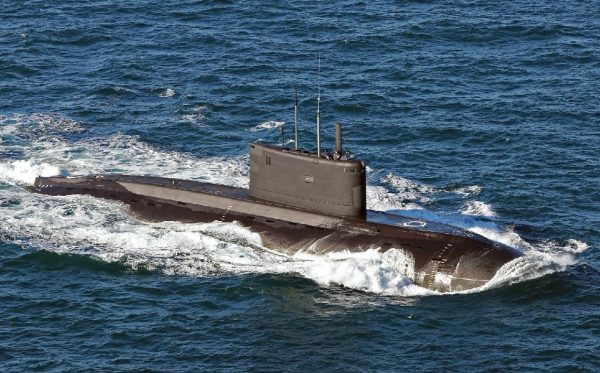The following article first appeared on Warrior Maven, a Military Content Group Member website. (Washington D.C.) Russia’s Navy is by any account much smaller, less lethal, and much less capable of projecting global power when compared to the U.S. Navy, yet its submarines remain a serious and somewhat pressing threat for a number of critical reasons.
Enter the Kilo
Current variants of the Soviet 1980s-era Kilo-class submarine feature an improved engine, advanced combat system, and various cutting-edge noise-reduction technologies. Some in the U.S. naval community refer to this class of Russian submarine as the black hole because it is relatively stealthy.
While the specific extent to which it can rival the U.S. Navy’s advanced Block III and Block V Virginia-class submarines may not be fully known, the Type 636.3 Kilo-class variants are the byproduct of a series of enhancements integrated in the mid-2010s to further strengthen the boat’s anti-submarine and anti-surface-ship mission.
Over the course of several decades, the Kilo-class boats have been engineered with advanced sonar, mine-detection, and avoidance sonar.
A piece in the Diplomat says Project 636.3 is an improved variant of Project 877 Kilo-class designs, which is slightly longer and more advanced.
Enhancements likely to be of larger concern, for instance, include ceramic compounds used as “coating” materials to improve “quieting” technologies, according to a paper published by Russian weapons maker Rosoboronexport.
Such materials, called Anechoic files, are defined as tiles fitted on casings to absorb the soundwaves, resulting in a reduction and distortion of the return signal.
Weapons for the Kilo
The Kilo-class can fire torpedoes accurately and very quickly in a window of 15 seconds, often using remote-controlled firing capability. The weapons capacity of the boats is detailed in an interesting article from the Federation of American Scientists.
“The submarine can carry 24 mines with two in each of the six tubes and twelve on the racks. Two torpedo tubes are designed for firing remote-controlled torpedoes with a very high accuracy. All torpedo tubes and their service systems provide effective firing from periscope to operational depths. The computer-controlled torpedo system is provided with a quick-loading device. It takes only 15 seconds to prepare stand-by torpedo tubes for firing: The first salvo is fired within two minutes and the second within five minutes,” the FAS paper says.
Can it Take on the U.S. Navy?
It would seem quite useful to determine the extent to which advanced 636.3 Kilo-class submarines can rival advanced U.S. Virginia-class submarines in terms of torpedo guidance, launching, and range.
Of equal importance would be the “coatings” or quieting materials surrounding the exterior of the boat, combined with quieting or enhanced propulsion technologies. The FAS essay also says the Kilo-class can deploy mines from its torpedo tubes, however, it would be quite significant to determine if, like the U.S. Virginias, the Kilos can succeed in launching drones from its torpedo tubes.
The specifics of the enhancements to Virginia-class submarines, first built into a prototype Block III boat called the USS South Dakota almost 8-years ago and have since become operational, are likely not available for security reasons. However, in a broad or general sense, Senior Navy weapons developers did say the enhancements related to antennas, coating material, and engine-quieting technologies.
Block III Virginias also have a Large Aperture Bow advanced sonar and an automated, joy-stick-controlled computerized fly-by-wire navigation system. The Kilo-class is described as having some computer automation, yet it seems it would be quite significant to determine the extent to which it can truly rival cutting-edge Virginia-class submarines.
This is of particular tactical significance because advanced Virginia-class submarines are increasingly being used for Intelligence, Surveillance, and Reconnaissance (ISR) missions to survey high-risk areas such as enemy coastlines while remaining much less detectable than easy-to-see surface ships.










COMMENTS
You must become a subscriber or login to view or post comments on this article.